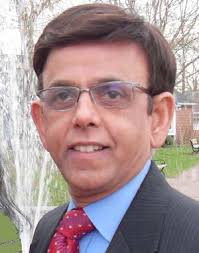
While not a complete avalanche for malpractice tort reform, the docs of the nutmeg state seem to have held off the attempt to ease restrictions on filing malpractice suits against physicians.
The Connecticut Mirror (Hartord, CT) reports:
You don't see this every day: The speaker, majority leader and minority leader all on the losing side of a 74-69 vote in the state House of Representatives.
On a bipartisan vote, the House on Thursday gutted a bill aimed at loosening the requirements for bringing a medical malpractice lawsuit, an issue that has sharply divided health care providers and plaintiffs' attorneys.
The bill would have altered a 2005 tort reform law that requires anyone who files a medical malpractice lawsuit to submit a written opinion, called a certificate of merit, from a "similar" health care provider to the one being sued, testifying to the appearance of medical neglect.
It sailed thorugh the Senate last week, but its backers were stunned Thursday night when the House gutted the bill by rejecting a Senate amendment that effectively had become the bill. After the rejection, the House leadership shelved the bill.
Eleven Republicans -- many of them lawyers -- joined 58 Democrats in support, but 41 Republicans teamed with 33 Democrats to kill the measure after opposition on the floor led by Rep. Prasad Srinivasan, R-Glastonbury, the only physician in the General Assembly.
 Rep. Prasad Srinivasan, R-Glastonbury
Rep. Prasad Srinivasan, R-Glastonbury
The measure was aimed at preventing what health care providers said were frivolous lawsuits that contributed to rising malpractice insurance costs. But critics of the requirement have said it's too restrictive. They have pointed to cases that were dismissed because the physicians who wrote the opinion letters weren't considered "similar" to the ones being sued. In one case, a court dismissed a lawsuit against an emergency physician because the certificate of merit was written by a doctor who described himself as practicing trauma surgery, even though most of his work time was spent in an emergency department.
An earlier version of the bill would have changed the requirement for the author of the certificate of merit, from requiring a "similar" health care provider to a "qualified" one. That drew opposition from health care providers, who argued that it would gut the 2005 malpractice reform measure.
The bill the Senate passed Friday would not remove the law's reference to the need for a certificate of merit from a "similar" health care provider, but it also provides another option: The letter could be written by a health care provider who the court determines has enough expertise in the type of health care at issue in the complaint that he or she could testify as an expert on the standard of care. The certificate of merit would have to include a detailed basis for the provider's belief in the evidence of medical negligence, and identify one or more breaches of the standard of care.
Legislators from both parties described the proposal as a reasonable compromise, but the Connecticut State Medical Society said it did not endorse the bill as a true compromise.

